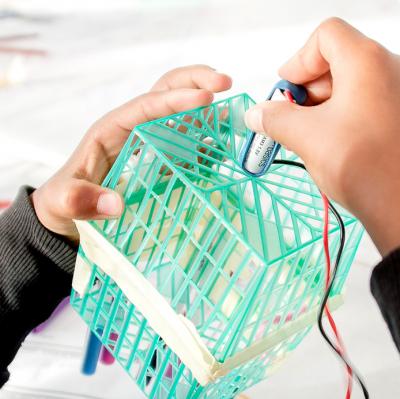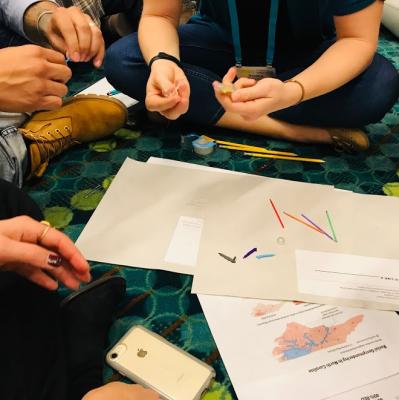这个思考模式鼓励学生在一个特定的系统里思考不同人物的观点。其目标是帮助学生理解系统里的不同角色,他们会用什么形式去表达感受以及对系统里其他人物和事物的关心。

这个思考模式鼓励学生在一个特定的系统里思考不同人物的观点。其目标是帮助学生理解系统里的不同角色,他们会用什么形式去表达感受以及对系统里其他人物和事物的关心。


High School technology students in Darlease Monteiro’s class use Parts, Purposes, Complexities to analyze website apps prior to designing their own.

PROTOCOLO PARA ANALIZAR DE FORMA CRÍTICA UN CONTENIDO, CONSIDERANDO DIFERENTES PERSPECTIVAS Y REPRESENTACIÓN, PARA DESPUÉS REDISEÑAR O REIMAGINAR ESE CONTENIDO DESDE UNA PERSPECTIVA PROPIA.


A rotina ajuda os estudantes a explorar a complexidade ao encorajá-los a olhar atentamente para os detalhes de algo, considerando uma variedade de pontos de vista, de usuários e de partes interessadas e refletindo sobre as próprias conexões e seu envolvimento com o objeto ou o sistema em questão.


Agency by Designer project Director Shari Tishman introduces the concept of “maker empowerment” as a potential outcome of maker learning experiences.

This piece is based on a workshop titled “Taking Apart Racism: Using Maker-Centered Practices to Break Down Systems of Oppression,” led by Jaime Chao Mignano and Mark Perkins at the National Association of Independent Schools People of Color Conference (PoCC).
Like a lot of educators, I want my students to be empowered to impact the world around them. I want them to have social and political agency in a sense that is perfectly aligned with what Agency by Design means by agency—that is, skills and tools in combination with intention and impulse to action. When I task my students with dismantling systems of oppression, how do they know what that means? Do they feel ready to enact it? And how can I be a support?
This was the seed of a workshop for this year’s National Association of Independent Schools People of Color Conference (PoCC), a gathering of thousands of educators from around the United States to explore ideas and share experiences around equity and justice in our schools and lives. My colleague, Mark Perkins (Media and Theater Coordinator), and I wondered what insights we could offer by putting Take Apart practice in service to racial justice education. I was nervous to try to build under the conference throughline “Anti-Racist Teaching Tools” - the stakes felt so high. We had an inkling, though, that combining the enthusiastic engine of taking stuff apart with the resonant act of creating stories that reimagine existing narratives of power could be an important experiment.
Mark and I built a workshop we call “Taking Apart Racism: Using Maker-Centered Practices to Break Down Systems of Oppression.” The heart of the workshop is the idea that looking closely and exploring the complexity of an object can create a bridge of metaphor that helps us understand a system of racial oppression. If we build the connection between these two systems—the system of the object and the system of oppression—then we can see the oppressive system in a new light and probe new possibilities.

A protocol for looking closely at content, considering perspectives and representation, and then redesigning or reimagining that content from one's own perspective. Try out the accompanying Learner Workbook!